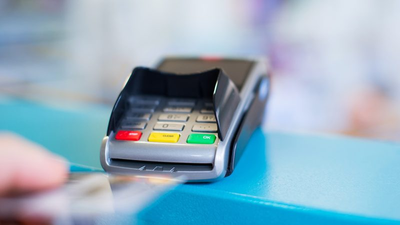
SUDBURY, Mass. (NEXSTAR/WWLP) – The discovery of credit card skimmers at multiple New England-area retail outlets has prompted local authorities to urge customers to be wary of similar scams.
On Christmas Eve, an employee at a Sudbury Farms supermarket in Sudbury, Massachusetts, was attending to the self-checkout area when they discovered a skimming device, which is designed to mimic the appearance of a legitimate credit-card reader, Nexstar's WWLP reported. A second skimmer was later found in another self-checkout lane.
The supermarket chain’s parent company soon launched an investigation, finding skimmers at four other locations in Massachusetts.
News of the discoveries also followed a November report from police in Concord, New Hampshire, who warned of skimmers that had been found in the city’s Walmart and Market Basket supermarket.
“Similar incidents are being investigated by law enforcement agencies throughout New England,” the Concord Police wrote at the time.
What is a skimming scam?
Skimming scams are targeted at people using ATMs, gas pumps, or credit card readers at retail outlets, the FBI says. The scammers carefully craft devices that look like legitimate card readers, which they then attempt to “blend right in” to the actual machine, according to the FBI.
The specific device used is often a realistic-looking card reader placed over the factory-installed card reader,” the FBI writes.
Once a victim swipes their credit card, the skimming device either stores or sends the victim’s information, for the criminals to retrieve.
Scammers have also been known to use hidden cameras to record victims entering their PIN numbers into ATM machines, the FBI said. Some also create fake numerical keypads that record the keystrokes of users, to steal such passwords.
How can you spot a skimming device?
Before putting your card into a reader, the FBI says there are some easy and effective ways to protect your information. Be sure to inspect the reader and look for any loose parts or damage. Scratches or damage to adhesive tape can also be indicators that it has been tampered with. If you give the skimmer a light shake and it feels loose, tell an employee.
To prevent cameras from capturing your passwords, the FBI recommends users cover the keypad with one hand, while punching in the PIN with the other.
Police in Concord added that some scammers will try to force victims to swipe their card at the phony reader (rather than allow them to the card’s chip, which is harder to steal information from) by blocking the chip slot, making that part of the reader appear “jammed.”
The FBI says ATM machines at tourist spots are also popular targets among scammers.
At gas pumps, the Federal Trade Commission offers tips for spotting signs of skimming, including broken security seals over the cabinet panel, or card readers that appear loose or different from ones at adjacent pumps. Customers who want to be extra cautious can also pay in cash rather than use a card, or at least refrain from using the debit option to avoid having to enter a PIN, the FTC suggests.
If you feel you’ve been scammed, it’s best to contact the credit card company or bank that issued the card, The FBI says. Local law enforcement agencies should also be made aware of possible scams.
As for the skimming devices found in Massachusetts, a supermarket spokesperson said customers that shopped and used self-checkout lanes at those grocery stores on or before Christmas Eve may have been impacted. Still, there had been no reports of compromised customer data several days after the devices were found.